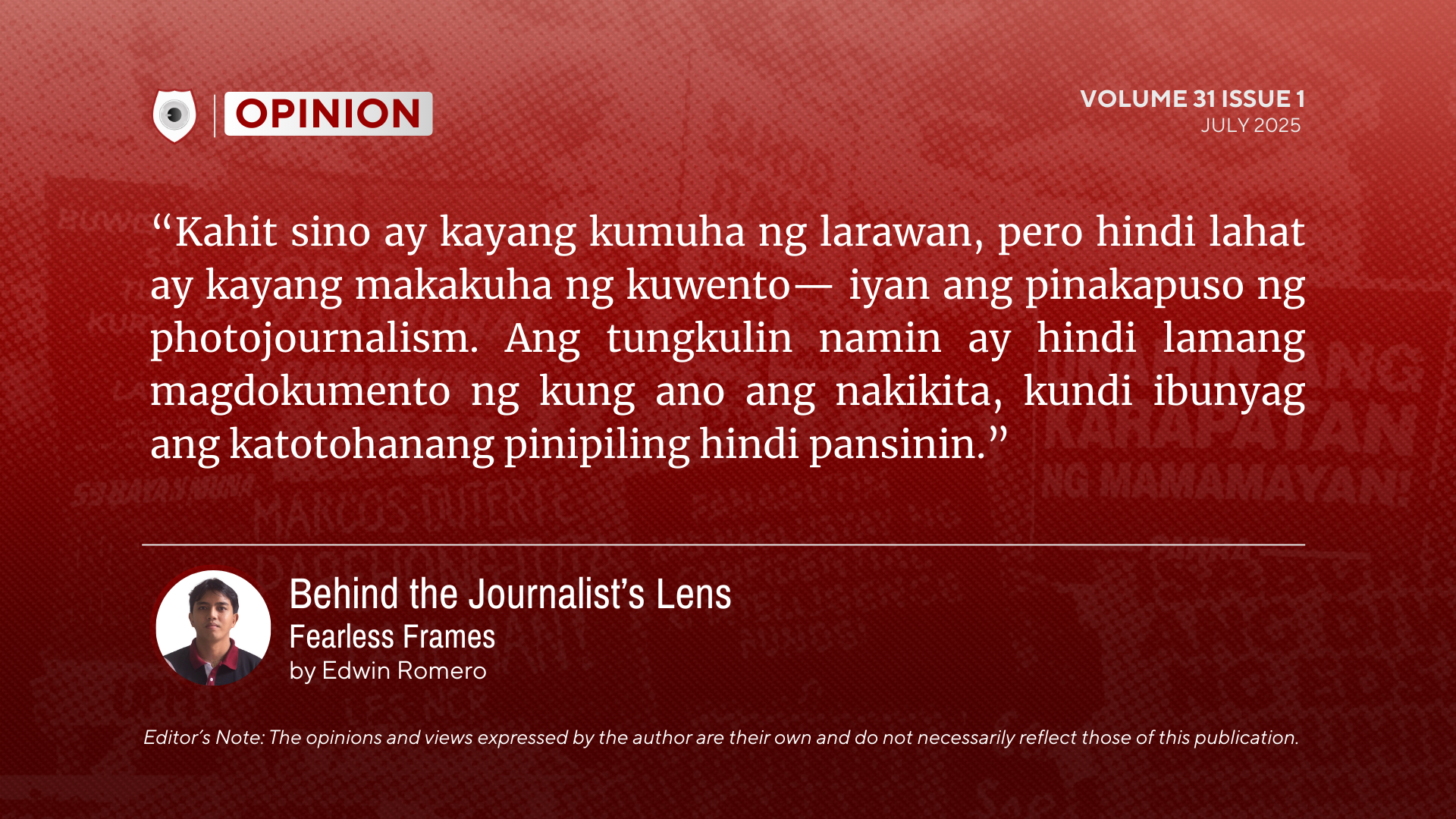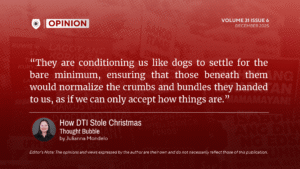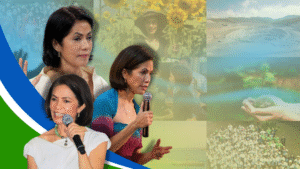By Edwin B. Romero | July 13, 2025
Behind a journalist’s lens
"PITIK nang pitik, hindi naman ina-upload"— a remark thrown at THE BEDAN HERALD during one of our photo coverages on campus. It wasn’t the first time someone said that to the publication, and it probably won’t be the last. But here’s the truth: Photojournalism is not just “photography.” That’s the misconception.
To them, we’re just 'photographers' with cameras. Just there to click and upload. But as the Chief Photojournalist of our student publication, I’ve seen firsthand that photojournalism is not just “taking pictures.” It’s not about chasing likes or filling up gallery slots in our Facebook album. It’s about telling the truth when it happens, and that truth isn’t always prepared or polished.
Here's what most people don't know: photojournalism is a form of journalism. It only employs images rather than words. But the intent is the same— to inform, to show, to document reality as it happens. The difference is that we don’t get time to write and revise. We capture within seconds, and if we miss them, the moment is gone.
Unlike photography, which can be staged, directed, and retouched, photojournalism is unfiltered and unplanned. It’s fast, it’s real, and it’s full of pressure. We’re not just capturing for aesthetics, we’re deciding, in a split second, whether a photo shows the truth or distorts it. Whether it gives justice to what’s happening or removes context entirely.
Kahit sino ay kayang kumuha ng larawan, pero hindi lahat ay kayang makakuha ng kuwento— iyan ang pinakapuso ng photojournalism. Ang tungkulin namin ay hindi lamang magdokumento ng kung ano ang nakikita, kundi ibunyag ang katotohanang pinipiling hindi pansinin.
I’ve experienced being in the middle of joyful crowds, vigils, heated debates, and tearful goodbyes. I’ve encountered covering in the rain, climbing up chairs, and standing for hours just for that one frame that says something deeper. Something human; something real.
Unlike studio photographers or lifestyle creatives, we do not direct; we watch. We are not searching for the perfect photo. We are waiting for the truthful one. A clenched fist of a protester. A student leader wiping away tears in the middle of a speech. Students cheering on a school event. These are not just "candid shots," these are moments of truth and strongly indicative of the world we inhabit.
That's the distinction. Photography can be orchestrated. Photojournalism can't.
Photojournalism is built on responsibility. We don't make reality happen; we document it. That weight is substantial. Each time we raise the camera, we are choosing who gets to have their story told and how it will be told. Our job as photojournalists is not to make things pretty; it is to explain. Because photos are powerful, that's why we're selective. We don't publish all that we photograph because not all stories are ready to be told, and not all pictures are ethical to publish. We consider dignity, harm, fairness, and the story. Behind every shot that appears in print or on screen is a reflection of our principles. We photograph with intent, we upload responsibly, and we act with the same journalistic honor as our writers and editors.
To dismiss what we do is to misunderstand journalism itself. Without photography, much of the news goes unseenand without photojournalists, much of the truth goes unreported.
Amid the noise of misinformation and the deepfakes, we, photojournalists, stand firm. With lens undaunted, we document stories that matter.
And that's a job worth more than a thousand pitiks.




